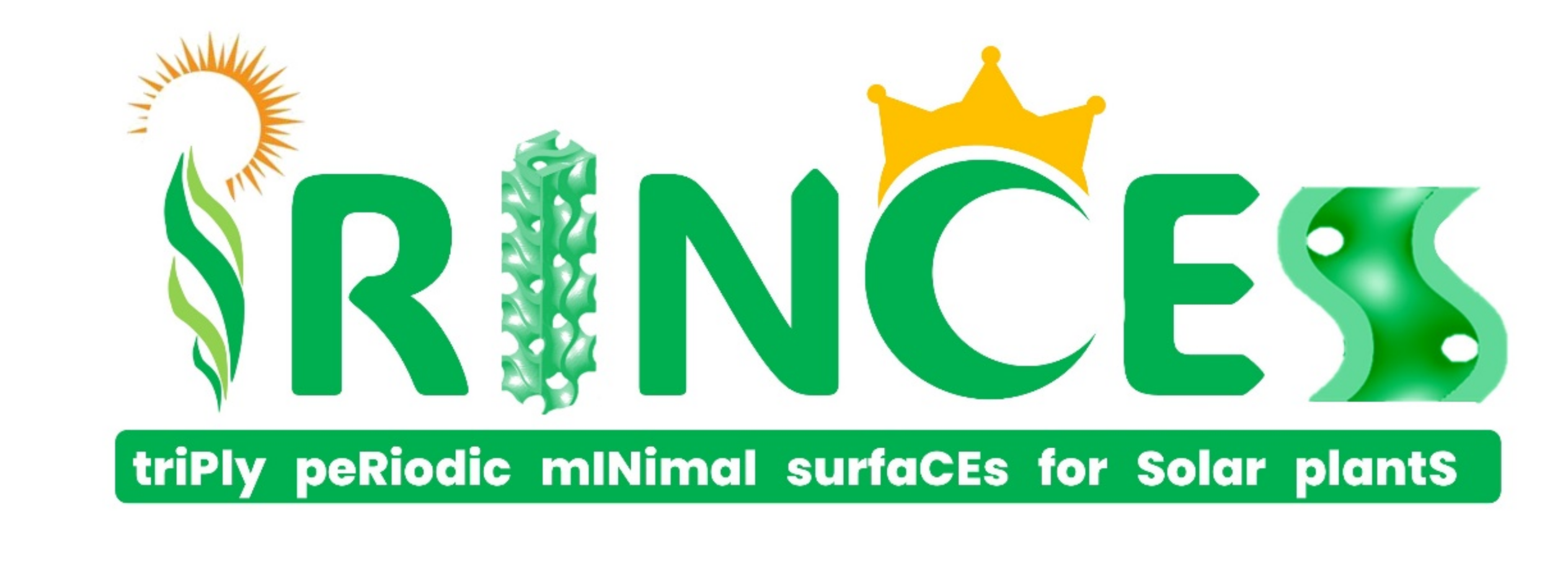PRINCESS - TriPly peRiodic mINimal SurfaCEs (TPMS) for Solar plantS

PRINCESS strives to offer a comprehensive solution to expedite the development and adoption of zero-emission power technologies by addressing crucial aspects of a CSP system: the receiver (which plays a vital role in solar towers, emphasizing the optimization of heat absorption and transfer) and the heat exchanger (where efficient heat transfer between working fluids significantly impacts the system's overall output).
Concentrated solar power (CSP) plants are increasingly pivotal in advancing renewable energy generation and providing clean energy for various applications. Solar energy utilization for power generation is a cornerstone of the European energy transition strategy, particularly aimed at decarbonizing the electricity sector. To meet the European Commission's target of a 32% increase in renewable energy consumption by 2030, global efforts are crucial for developing cost-effective solutions and achieving substantial progress. CSP plants employing supercritical carbon dioxide (sCO2) power cycles are recognized as the next evolution in concentrated solar thermodynamics. These systems offer the potential for higher efficiencies and cost-effectiveness compared to traditional methods, making them highly competitive for electricity generation.
The current state-of-the-art HTF in solar tower technology is molten salts, capable of reaching temperatures up to 565°C. However, achieving higher temperatures, such as 700°C or above needed in sCO2 power cycles, would necessitate a new HTF due to the limitations of solar salts. An emerging approach involves utilizing air as the HTF, as demonstrated in the SHARP-sCO2 EU project , which conducted a preliminary techno-economic analysis of a novel air-driven supercritical CO2 CSP plant. The innovative layout and hybridization approach proposed in the SHARP-sCO2 project, foundational to PRINCESS, can reduce the levelized cost of electricity (LCOE) of an sCO2-based CSP plant by over 20%. PRINCESS solutions not only achieve EU CSP cost targets but also advance the SHARP-sCO2 project by introducing more efficient and compact air receiver and heat exchanger technologies.
Air-based systems lower capital and operational costs, reduce environmental impact due to their non-toxic and non-corrosive nature, and conserve resources by eliminating extensive water use for cooling. Additionally, air-based systems demonstrate greater flexibility, operating efficiently across a wide temperature range. Integrating triply periodic minimal surfaces (TPMS) to address challenges with the convective heat transfer coefficient enhances the effectiveness of air-based sCO2 heat exchangers. TPMS represent a fascinating class of geometric structures with intricate surface patterns and zero average curvature. Their intricate surface geometries provide a large surface area-to-volume ratio, facilitating efficient heat exchange across the surface. They promote fluid mixing, and thus heat transfer, with a limited increase in pressure drop. In recent years, there has been a growing interest in leveraging the unique properties of TPMS for various engineering applications, particularly in the field of heat exchangers. Thus, PRINCESS specifically targets the receiver and air-to-sCO2 heat exchanger, aiming to develop, prototype, and test an innovative air solar receiver module incorporating TPMS, alongside a novel TPMS-based air-to-sCO2 heat exchanger. The objective is to enhance efficiency and simultaneously reduce costs.
Project Partners:
-
Centro de Investigaciones Energetics, Medioambientales y Tecnologicas ( CIEMAT )
-
Kungliga Tekniska Högskolan ( KTH )
-
MG Sustainable Engineering AB ( MGS )
-
Politecnico di Milano ( PoliMi )
-
Politecnico di Torino ( PoliTo )
Project Duration: December 2024 – December 2027
Funding Statement: Funding is provided by the Clean Energy Transition Partnership under the 2023 call for research proposals, with the Swedish partners receiving funding through the Swedish Energy Agency.
KTH Researchers
